People and businesses can no longer deny the importance and the dependence brought about by the advancements in network communications. Central to these communications are network cards, adapters, network interface cards (NICs), and other hardware components that facilitate the connectivity of all devices within a network. This paper, therefore, aims to clarify the myths surrounding these devices by explaining their relevance in computer networks – their functions, types, and construction. This way, whether you are an It expert intending to broaden your understanding of networks disregarding the ordinary concept of fastening wires in place and shoving the devices in one corner or you are an ordinary computer geek eager to know more about other plausible architectures, this text is all you need.
Table of Contents
ToggleWhat is a Network interface card NIC commonly known as?”
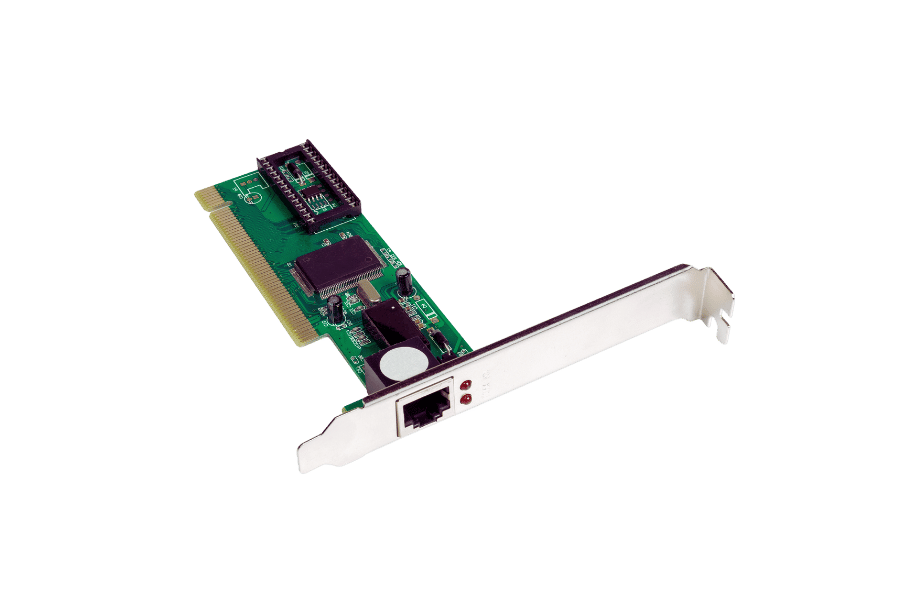
Definition and Definition of a NIC in a Computer Network.
Definition: A network interface card (NIC) is a device that allows computers and other devices to connect to a computer network. It brings information to the device in the form that is suitable for use at present to be sent through network cables or wireless. The NIC is regularly built into the device, but different network interfaces are supported, including Ethernet and Wi-Fi. They handle essential functions like routing the data during the transfers, proper data packaging, and addressing; hence, they are important components in the operation and efficiency of any computer network. These functions as such allow for the transfer and connectivity of information within a network, and this cutting as of ease Chin.
Network Interface Cards Classification: Combination of Wired And Wireless
Network interface cards can either be wired or wireless. The wired card is also known as the ‘Ethernet card.’ It provides network connection with the help of wires/cables and, therefore, is able to offer better transmission units of data over distance. This ensures high availability in areas or utilities where high availability swift connections are required, such as data centers and networks of large corporations or enterprises. However, the use of this device does not require the use of any wires; it uses radio waves to connect to the network, converging onto amenities such as Wi-Fi. Though these provide some advantages in terms of range and convenience, they sometimes, in their function, fall short of expectations since the interference is heavier than the wired option and the drops in performance are severe. Each of the categories of NICs meets the various needs and wants of varied people and procedures that underpin the deployment of networks in different settings.
What Functions Does the NICs in a LAN Perform?
In a Local Area Network (LAN), the communication process is made possible by the Network Interface Card (NIC), which performs the most critical role – allowing the computer to interact with the network by way of the physical interface provided by the LAN. This means that it takes the output from the end device and converts it in a way that it can now be transferred in packets over the network, that is, propaganda is converted properly in terms of addressing and headers, so that the delivered packets are correctly marked. So, the NIC efficiently controls traffic by sending and receiving packets from the device to any other devices in the LAN and vice versa to allow for the exchange or flow of data. Furthermore, such a card also checks against errors in the data being transferred through the network.
What Are the Different Types of Network Adapters with Examples?
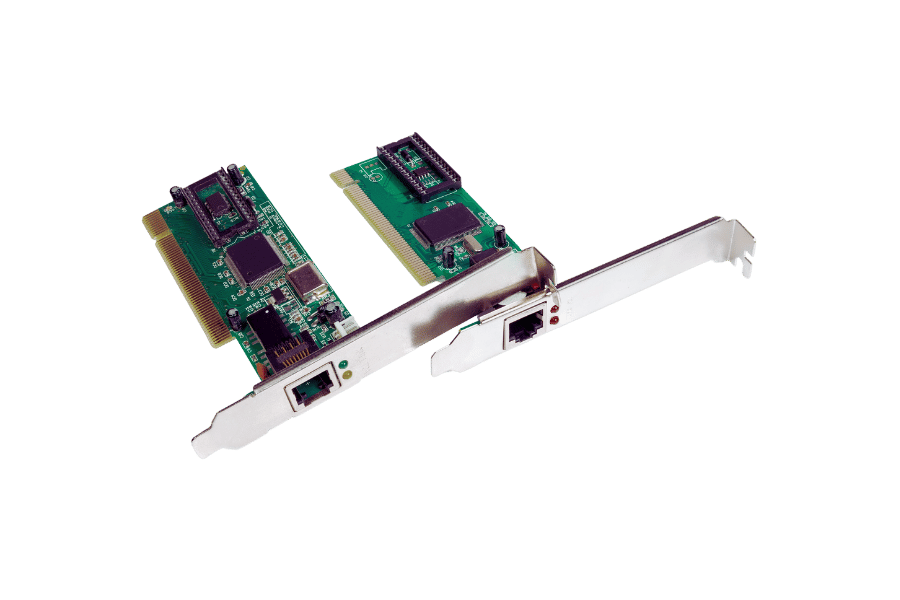
Some observations of Ethernet and Wireless Adapters
Ethernet adapters are known as wired or external adapters, they deliver stable high-speed network access via interconnected cables usually supporting different varieties like Gigabit Ethernet for fast tariffs. Such connections are not likely to get to interference; hence, such connections are encouraged within special environments like data centers that require constant bandwidth and performance. Wi-Fi, on the other hand, allows the use of wireless adapters that allow the connection of devices to a network within the range of access points. The downfall is that this feature has limitations like obstruction from walls or even other electrical gadgets, which may impede the connection and speed dramatically. Ethernet adapters and wireless adapters are chosen differently according to network requirements and conditions.
USB Network Adapters Explained
Network adapters based on the USB format allow the user to connect external network devices to a computer or add network functions to such devices that do not have a built-in network interface. These adapters are available for both Ethernet and wireless connectivity by being inserted into a USB port that is commonly found on all devices and, hence, portable and instantly usable. USB adapters hook up to the traditional Ethernet cable for fast Ethernet connections to easily be accomplished by the USB device. Wireless USB network adapters, on the other hand, allow these devices to connect to Wi-Fi networks and hence do not require wiring, compromising the movement of the devices. USB network adapters supplement or modify the networking capabilities of existing machines, which, in one way or another, lack built-in devices because of hardware changes.
What is a PCI Express Network Adapter?
A PCI Express Network Adapter is an internal hardware device that connects to the personal computer through one of the PCIe slots available on the system’s motherboard. This adds, or in some cases, enhances the current network connectivity of the computer here. These adapters use the network architecture of PCIe buses, which allows them to transfer to gigabit networks or higher very quickly. PCI Express Network Adapters are extensively used on servers and desktop computers where both stable and fast internet connections are needed. They are also cost-effective with constant low-latency connections, which by economizing are considered appropriate to most network-based tasks that are resource-demanding.
How do I decide on what network card to buy?
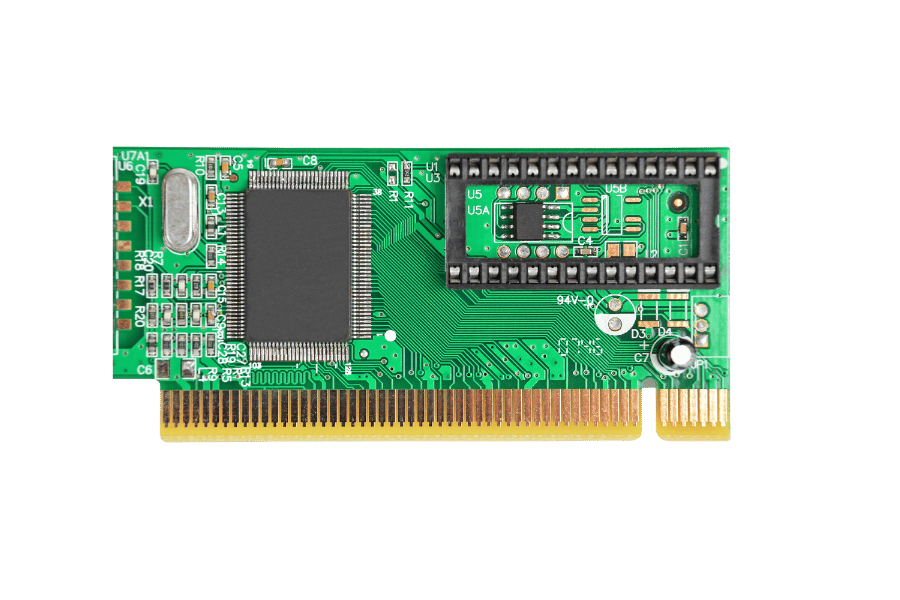
Basics to know when buying a Network Card
Network cards are crucial components of computers or laptops, and their selection should take into account several factors so a good match can be made. First, establish the network type. Imagine yourself wired to two computers. With wired connections, ensure that the card suits the speed required, such as a gigabit Ethernet, and its interface is PCIe/USB. For wireless, there is a bias on the idea of Wi-Fi (802.11) standards and frequency range. Affordability. Reliability and quality. Also, state how much land is left for mounting the wires outside of the computer casing, for-hole mounts and so on. Finally, include any additional controversial aspects that may help. For example, the awful sound of a network card turbine is tolerable if the card is able to deliver what is expected. And lastly, what additional features are essential like an embedded Bluetooth, some security measures that may come handy depending on the market or network working environment will be taken care of.
What Speed Should Your Network Card Support?
Determining what speed is sufficient for your network card mainly depends on your internet usage and the activities you will be undertaking. For general home office usage, a gigabit Ethernet-supported card is ideally sufficient, as it can go up to 1,000 Mbps, which is more than enough to stream, browse, and download in moderation. However, if your usage involves bandwidth-heavy tasks such as transferring large amounts of data, playing high-end games, or using video conferencing, then opt for a card with supporting speeds of 2.5Gbps, 5Gbps, or even 10Gbps for better efficiency. Additionally, the speed capabilities of your network card need to be in line with the speed of your internet service and other infrastructure to optimize the capacity of your setup.
Who Reigns Supreme: Built-In or Expansion Cards?
In looking to decide built-in or expansion network cards, there are a host of other factors to consider so that you would be able to know which one is better for your needs. Built-in network cards are certainly convenient because they are already mounted on the motherboard, so there’s no need for extra installation. In general, they operate well enough where basic home and office usage is involved. Nonetheless, expansion cards help offer flexibility and improved efficiency by allowing users to improve their systems for higher performance, advanced capabilities, rudimentary ones or new forms of technologies. Expansion cards are especially useful in such situations where there is a need for a unique and specific configuration of networks or in the cases where such networks have to be upgraded and modified in the future. No one, however, has an ideal or perfect solution for this otherwise complex problem. It mostly depends on one’s performance requirement, appetite for new technologies through hardware upgrades, and the particular nature of the network environment.
How to Install a Network Interface Card?
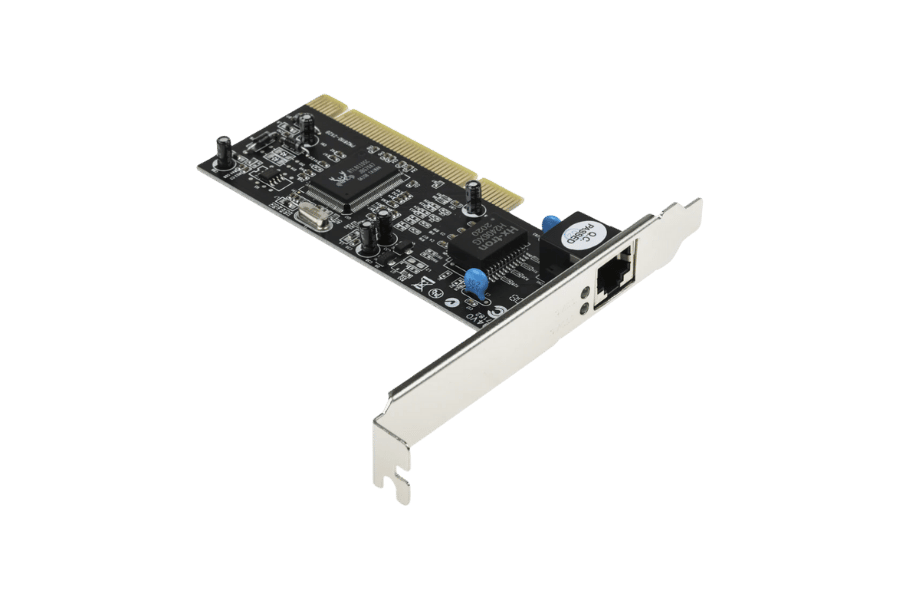
A NIC Expansion Card: Installation Manual
- Power Down the Computer: If the system is on, it must be turned off and its plug disconnected to avoid any risk of electric shock.
- Open the Computer Case: Use screws or any means that you used to enable the opening of the case to access the motherboard.
- Identify an Open PCI/PCIe Slot: Find an empty location on the motherboard to place the network card.
- Insert the Network Card: With the help of a user, orient the card where the slot is and push down until the card lodges securely within the slot.
- Secure the Card: Attach the brackets previously mounted on the card to the casing wall.
- Close the Computer Case: Replace the casing cover and fasten it with screws or a latch.
- Reconnect Power and Peripherals: Reconnect the Kettle cord to a wall point and any other related peripherals, then proceed to switch the computer on.
- Install Drivers: Switch on the system and, if need be, install the relevant network card drivers.
- Verify Installation: Ensure the installed device works according to the system’s network options.
Common Problems During the Installation of the Network Adapter
Several common issues may arise when installing a network adapter and stall the completion of a setup. One is the operating system failing to detect the device, which could result from improper seating of the network adapter into its PCI/PCIe slot or motherboard incompatibility issues. To remedy this problem, I ensure my adapter is well seated and then read the motherboard’s description to check its compatibility.
Another problem is that the drivers are either missing or outdated and will mostly not work for networking. I solve this by going to the manufacturer’s website and obtaining upgrade lists of the drivers needed that purely fit the model of my network card.
Last but not least, factors such as the presence of other peripherals or programs that perhaps interfere with the working of the installed adapter may also be an obstacle. When these conflicts arise, I make sure that I look into the Device Manager for any network devices that are already installed and deactivate or uninstall them if needed. Moreover, the management of the operating system is important as all these software problems are normal after one adds new hardware to the system. In conclusion, with these solutions in hand, I know how to behave in case of such common installation problems and find ways of resolving these issues.
Configuring Your Network Card After Installation
- Access Network Settings: Open the operating system’s network settings to access the configuration options for the network card.
- Assign IP Address: Depending on network requirements, set a static IP address or configure the card to obtain an IP automatically via DHCP.
- Configure DNS Servers: Input the appropriate DNS server addresses to ensure proper domain name resolution.
- Adjust Network Protocols: Enable or disable network protocols such as IPv4 or IPv6 according to your network environment.
- Check Connectivity: Verify the connection status to ensure the network card is correctly functioning and can communicate with the network.
What Kind of Shortcomings Are Found In Network Cards?

Detecting Malfunctioning Ethernet and Wireless Connections
Network card issues in Ethernet and wireless connections can stem from multiple factors. Ethernet detainment problems include frayed cables, wrong port configurations, network switches, and router issues. To troubleshoot, one checks the cable for any damage, ensures that the correct port settings are used, and confirms that all relevant equipment works. The most common culprits include radio interference, outdated driver software, or inserting incorrect credentials for the network. To remedy these, one can change the channel to a less crowded one or one with less interference, update the wireless adapter drivers, or check again for the correct SSID and password. It is evident that in both association modes, there should be proper maintenance of hardware components to avoid prolonged performance breakdowns, as well as timely improvement of software.
Methods for Diagnosing Network Interface Card Problems
To successfully troubleshoot the network interface card (NIC), one must start with the simplest things, like checking for the physical connections and making sure that the NIC is properly installed and the cables are working. The subsequent step is to check that the right drivers are installed and there are no outdated or corrupt drivers; most users create connectivity problems by installing the wrong drivers and failing to update them. Using the device manager or its equivalents, examine the condition of the NIC and search for any error codes as they will explain the reason for this anomaly or quite a number of them. For connectivity problems, make use of a ping test in order to assess the response time and the availability of the network. In cases where there is, by chance, a NIC that could link by wired connection and wirelessly, direct variance using one platform could help trace the problem to any of the interfaces only. Further, make sure that the configuration settings of the network, particularly the IP/DNS/ Gateway addresses, are correct. If all those recommendations do not help, you should do the network stack reset – or probably even replace the network card. Regular maintenance, including updating the drivers from time to time or the hardware, is required in order to avoid conditions that relate to a NIC malfunction.
Upgrade vs. Repair: When to Get a New NIC
One of the most common questions a user has is whether to upgrade or repair the Network Interface Card (NIC), so assessing the level and type of damage is essential. If the NIC has trivial problems, such as drawbacks that may be solved with corresponding programs, drivers, or some easy-remedy, repairing the card may be more favorable for the total cost and prolong the NIC. If the NIC is often out of order, is already outdated, and can’t support modern devices, or provides considerable difficulties with implementing network functionality, it is more reasonable to suggest replacement. Replacement of the NIC with a modern one brings speed, reliability, and adherence to modern network standards that increase the performance of the equipment. Analysis of cost is very pertinent because you need to estimate the cost that will be incurred in the repair versus the cost of new equipment as well as the new technology.
What is the Future of Network Cards and Adapters?
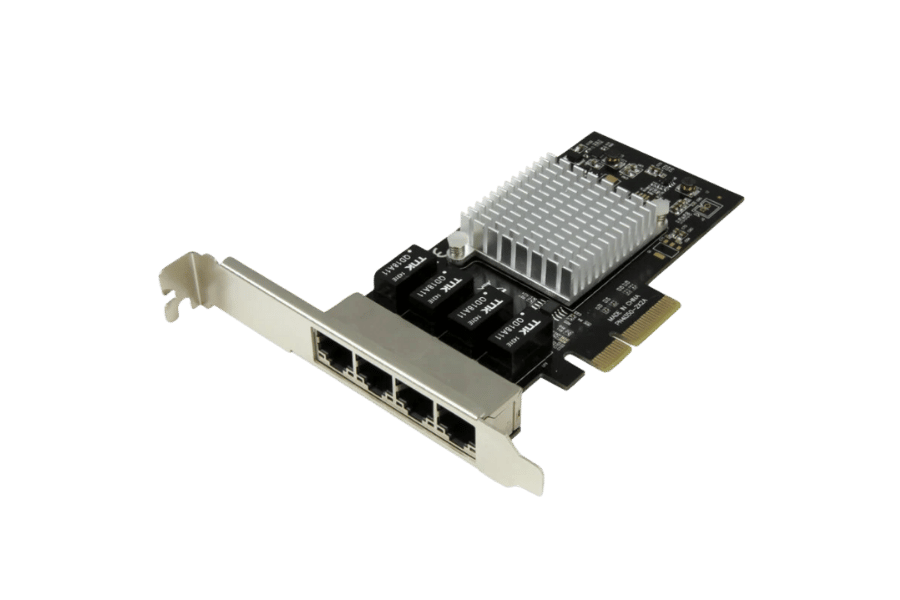
Changes in Network Interface Cards
Network Interface Cards (NICs) cover new trends about increased data processing performance, protection, and efficiency. High Data Rate support is present through upcoming technologies such as 5G and Wi-Fi 6, an addition of more robust cryptographic devices to enhance the security of the data, and low power consumption designs are some of the developments. Besides that, smart NICs come equipped with aircraft boarding that supplements all or part of the data path processing, freeing up the CPU to be more productive in data-rich situations. Because of these factors, they are being regarded as key building blocks in the conventional networking infrastructures, which improve applications both at the consumer and enterprise levels.
How Wi-Fi 6 Changes Network Adapters
WiFi 6, or IEEE 802.11ax, has several features that make it attractive, such as high-speed data transmission and high speed coupled with a high return on investment on network adapters. This development lowers the overall latency times and improves spectral efficaciousness, supporting an increasing number of devices while maintaining accurate bandwidth. Installing Wi-Fi 6 in the network adapters also improves the security features, thereby answering the modern network requirement for a safer and more dependable connection. As a result, adapters must undergo these changes to take benefit of such improvements and serve the two markets of both home networks and corporate networks without any inconveniences.
Reports the Trends on Gigabit and 10 Gigabit Ethernet Cards
The need for more bandwidth and better network functioning is responsible for the emergence of the next generation of Ethernet cards, 1 Gbps and 10 Gbps, respectively. Most consumers and small companies can still use the Gigabit Ethernet card as the status quo because it is sufficient for normal usage, and does not require much bandwidth. However, as the use of data consumer applications for streaming and cloud computing continues, the migration towards 10-Gbps Ethernet cards is rapidly building up. The visible difference in throughput supported by these cards is important in present-day enterprise desktop networks, data centers, and other networks requiring the use of durable and efficient infrastructures. Furthermore, new features of these Ethernet cards include better energy efficiency and support for virtualization useful in cost-effective and expandable network environments. Such general consequences of the development of Ethernet cards center on the demand for fast and constant connection to the computer, owing to the current world of technology.
Reference Sources
Frequently Asked Questions (FAQs)
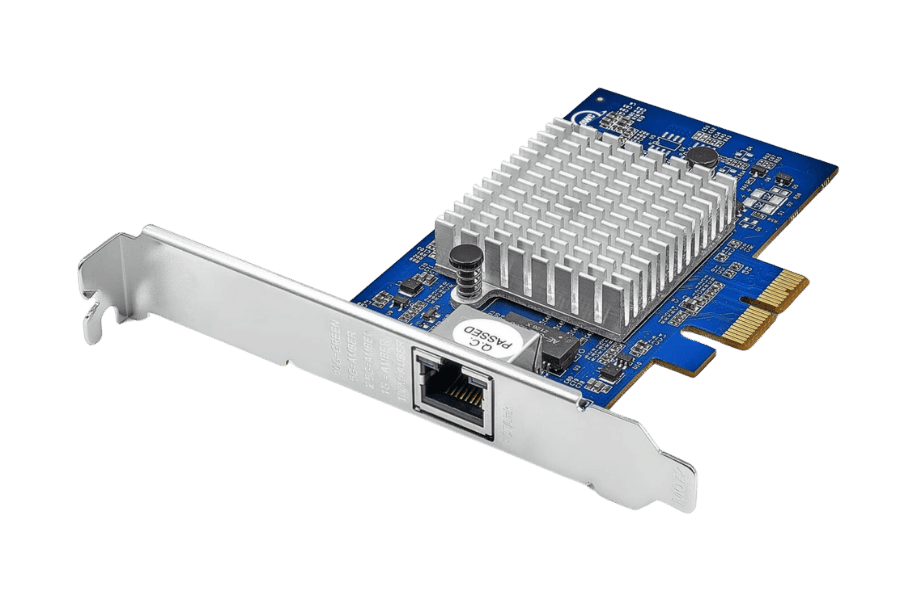
Q: What is a Network Interface Card (NIC), and what does it do?
A: A Network Interface Card (NIC), or simply a ‘netword adapter’ or ‘network card’, means any physical component which connects the computer and the network. It connects the computer to the twisted pair wire or some kind of wireless connection at both the physical and data link layers of the network. NICs exist in different shapes, like PCIe Internal network cards, USB adapters, and built-in motherboards.
Q: What is the difference between Ethernet and Wi dot conjunction Wi dot conjunction network adapters?
A: Ethernet network adapters are those that physically connect the devices to the network via cables having RJ45 ports (these are usually RJ45 ethernet patched), while Wi-Fi adapters connect to the network using signals. Desktop PCs tend to have Ethernet adapters which usually have better and more robust internet connections than wifi, however, WIFI cards are more portable especially to laptops. Users of NIC adapters need not worry as some of the devices in the modern world have the capacity for both Ethernet and Wi-Fi connections.
Q: How should I select the appropriate NIC to use with my desktop computer?
A: To begin with, when selecting a NIC for your desktop PC, you should look into compatibility with your motherboard (for example, the given availability of PCIe slot), speed (for example, Gigabit Ethernet, 2.5 Gigabit Ethernet or 10Gbps etc), whether it supports others WiFi standards like Wi-Fi 6 / Wi-Fi 6E or if you have requirements of additional functionalities such as, whom otherwise would be useful WoL or link aggregation, etc. In addition, check whether the operating system, such as Windows 11 and Windows Server, is supported by the NIC.
Q: What are the benefits of using PCIe network cards in place of built-in NICs?
A: There are many reasons why PCIe network cards are also more reasonable to use, among which are:1. Gigs (speed) (e.g. 10 Gbps) 2. Additional ports such as SFP connectors 3. Support even more network bandwidth at a higher level of usage 4. Network replacement upgrade without replacing the whole mainboard 5. Possible assisting in better configuration to a particular network or server
Q: How do wireless network cards enhance laptop connectivity?
A: Wireless network cards in laptops are advantageous in several ways: 1. Portability: No need for a wired connection to broadband 2. Enhanced reception: While usage of laptop-integrated, passive wi-fi cards is inferior, Wi-fi cards have a few security advantages over internal pc wifi networks 3. Modern wireless capabilities enable the latest Wi-Fi technologies, including Wi-Fi 6 or Wi-Fi 6E, for better performance 4. Flexible access to various wireless networks, be it public, private, or distant, including Wi-Fi routers and other wireless networks at home and abroad 5. Less wire mess and more lifetime
Q: What is the distinction between network adapters of speed 1Gbps, 2.5Gbps, and 10Gbps?
A: The following numbers refer to the absolute upper limits of such adapters’ theoretical data transfer rates: 1. 1Gbps (Gigabit Ethernet): Popular in today’s devices as it supports 1000 Mbps. 2. 2.5Gbps: This is about two and a half times gigabit ethernet’s transfer speed and is ideal for home or small office high-performance networks. 3. 10Gbps: This is a hundred times the speed of gigabit ethernet, which is mainly found in enterprise systems or in highly demanding editing or server communication tasks. Increasing data speeds enhances the rate of file transfers, the quality of streaming, and the number of intensive tasks supported concurrently on the network.
Q: Can I plug in a USB-C to Ethernet cable instead of the internal network card to my laptop?
A: Certainly not. A LAN port or internal network card is unnecessary as portable USB-C to Ethernet adapters can address these alternatives. They are very light in weight and include the following benefits: 1. Portability: Easy to lift and use with different devices 2. Plug-and-play functionality: It is unnecessary to open the laptop or fix internal structures 3. Compatibility: Working with devices lacking Ethernet jacks 4. Gigabit Ethernet and more speeds are supported. Surprisingly, however, these may not match up to the performance level of the available high-end internal NIC, particularly if that said application requires extremely high speed or very low latency.
